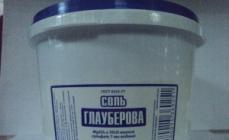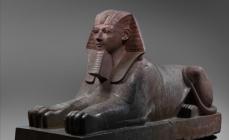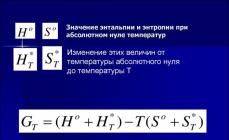When choosing a LED lamp, pay attention to the lumens to make sure the number of light you need.
Usually we buy things based on the amount that we need, right? When we buy milk, we buy it in liters. Then why should it be different with the light? For decades, we bought light bulbs, guided by how much energy they consume (watts) - and, not paying attention to how much light they give us (lumens).
Lumens shows how much light you get from the light bulb. The more lumens, the brighter the light. Fewer lumens gives less light.
But the brightness and number of lumens can vary greatly, therefore there is a certain method of calculating suitable characteristics.
Practical calculation method:
- to replace a 100-watt incandescent lamp, look for a LED light bulb that will give 1100 lumens;
- 75-watt lamp - about 750 lumens;
- 60-watt lamp - about 550 lumens;
- The 40-watt lamp is about 200 lumens.
If you need any less bright, get LED lamps with fewer lumens.
Lighting efficiency:
But you must not forget that Lumen is a complete light stream from the source. However, this measurement usually does not take into account the focusing efficiency of the reflector or lens and therefore is not a direct parameter for the assessment of the brightness or useful performance of the beam of the lamp. A wide light beam can have the same indicator of lumen, as well as in a narrow-reformed. Lumens cannot be used to determine the intensity of the beam, because the estimate in lumens includes all the scattered and useless light.
Suite - Unit of light measurement.
For example, 1 luxury is equal to the illumination of the surface with an area of \u200b\u200b1 m² with a light stream of radiation falling on it, equal to 1 lumen. If you collect 100 lumens and spread them to a 1 m² area, then the illumination of this area will be 100 lux. If the same 100 lumens are sent by 10 m², then the illumination will be 10 lux.
 LED label:
LED label:
What should be on the package when you buy LED lighting devices?
To help consumers, it is better to understand the transition from Watt to Lumen, the Federal Trade Commission proposed a new label for LED lamps. Such a label will help people buy light bulbs that are suitable for them.
Just like labels for food, the label for lighting devices will help to understand consumers that they really buy. The label is clearly indicated: the light stream, the view of the flask, the price, estimated cost of operation for the year and the color of the glow from the warm white (with a yellowish tinge) to the cold white to the cold (with a blue tint).
Suites, lumens, Kelvin, Watta - What do these basic technical terms mean in the characteristics of LED and other lamps used for lighting?
Knowledge of these basic technical terms will help you when choosing LED lamps.
To begin with will understand how LED worksThis is used as a light source in LED lamps.
The usual incandescent lamps are glowing because the electric current that passes through the finest incandescent thread made from the refractory metal (as a rule, it is tungsten) heats it to such a temperature that it begins to emit light.
Note: Tungsten - the most refractory metal. Its melting point is 3422 ° C, boiling - 5555 ° C. Approximately the same temperature has a photosphere of the sun.
LED LED LED- This is the result of electron movement in a special semiconductor material. Modern technologies allow you to create LEDs with a service life of up to 20 years (more than 35,000 hours).
|
The outer surface of the cathode and the anode contains contact metal platforms with soldered outputs. When a positive charge of electricity is supplied to the anode, and the cathode is negative, then the transition between the cathode crystal begins to flow the current. If the inclusion is direct, the electrons from N and the region and the holes from the P-region will rush towards each other. In the process of doping (electron exchange) on the border of the hole - the electronic transition will be exchanged. If a negative voltage is fed from the N-type material side, then a direct displacement occurs. |
|
During recombination (exchanging), energy in the form of photons is highlighted.
In order for the photon stream to convert to visible light, the material is selected so that the photon wavelength length is within the visible region of the color spectrum of the wavelength from 700 to 400 nm.
Definitions
Light flow - Quantitative characteristic of radiation, which is emitted by the light source. Unit of measurement - (LM, English LM)
Simple words:
Light flow - This is the total amount of light that emits this light source.
The power of light - The ratio of the light flux directed from the light source within the elementary spatial angle (1 steradian), covering this direction, to this corner. Unit of measurement - (CD)
Simple words: The power of light - this is the density of the light flux
Light - Surface density of the light flux falling per unit surface. Unit of measurement - (LK, EnglishlX).
Simple words:
Light Directly proportional to the power of light. Those, when the illumination is removed from the surface, it is reduced and vice versa - the closer the light source to the surface (light bulb), the less powerful it should be. It is usually normalized horizontal illumination (in a horizontal plane).
Lighting power - the magnitude of the brightness of the illumination per unit area, i.e. accepted light. For example, the brightness of sunlight reaches 100,000 suite, in the shade - 10,000 suite, in the illuminated room - about 300 lux
Color feeling - General, subjective feeling that a person is experiencing when looking at the light source. The light can be perceived as warm white, neutral white, cold white. An objective impression of the color of the light source is determined by the color temperature measured in (TO)
Brightness - This is the ratio of the light intensity emitted by the object in a given direction to the projection of the surface of this object to the plane perpendicular to this direction. Brightness is directly related to the level of visual sensation, and the distribution of brightness in the field of view (for example in the interior) characterizes the quality (or degree of comfort, convenience) of lighting. Unit of measurement - cD / m 2
Integrated driver - It is in mind that a commissioning device is an integral part of the electronic circuit of the lamp (i.e., placed on one board with a light source)
Units
Watt(W, English w) - the amount of energy consumed. unit of measurement W (W)
With regard to lighting, the amount of watts, which indicates the manufacturer on the package, is not characterized by the brightness of the device, not the amount of light, which will emit a light bulb, but only the amount of electricity that uses the source (light bulb) in one hour of operation.
To understand exactly how much light gives light bulb, it will correctly pay attention to the number of lumens or candel.
When buying conventional incandescent lamps, the amount of watts listed on the label label determines how much it will shine. But the LEDs, this indicator has a completely different value, because They have a completely different.
But you can still hold a parallel between the brightness of incandescent lamps and LED lamps, focusing only at power. For this, even there are special comparative tables.
The easiest way translation of power in lumens For a conventional incandescent lamp:
The amount of watt is multiplied by 10, and we obtain an approximate number of lumens.
for exampleIf you need as much light as it gives the usual 60W lamp, look for a lamp of about 600 lumens. It can be a LED lamp with a power of approximately 8-12 watts.
It is clearly visible in the above comparative table.
|
Incandescent lamp |
Fluorescent Lamp, |
LED lamp, |
Light stream, lm |
|
About 250 lm |
|||
|
About 400 lm. |
|||
|
About 700 lm. |
|||
|
About 900 lm. |
|||
|
About 1200 lm. |
|||
|
About 1800 lm. |
|||
|
About 2500 lm. |
Lumen (LM, English - lM.) - Unit of measurement of light source light source. It defines the amount of light emitted by the light source.
One lumen (1 lm) is a light flux that is emitted in a unit bodily corner of the value in 1 Steeradianequalized point source located in the center of a single radius, and having an intensity 1 Kandela. (1lm \u003d 1kd * cf). Light source with light stream in 1 lm.uniformly illuminating 1 sq.m. Creates lighting 1 lux.
Simple words:
Lumens determine how much light empties the lamp in all directions. The more light, the greater the number of lumens. This should be considered when choosing a LED lamp. Lumen for light bulb is similar to a liter for tank, kilograms for weight products or meters for linear. Those. The LED lamp with a large number of lumens will give a brighter light (as a larger volume will contain more water). Less lumens will give less light.
But the brightness and the number of lumens can vary greatly. Other features, such as color, brightness, illumination and light power, should also be taken into account.
It is also worth remembering that Lumen is full light flow from the source. And this measurement usually does not take into account the focusing efficiency of the reflector or lens, and therefore is not a direct parameter for the assessment of the brightness or beneficial performance of the beam of the lamp. A wide light beam can have the same indicator of lumen, as well as in a narrow-reformed.
Lumens cannot be used to determine the intensity of the beam, because the estimate in lumens includes all the scattered and useless light.
Lux- Unit of illumination used in the SI system. Suite is equal to surface illumination with an area of \u200b\u200b1 sq.m. With a light stream from a source of 1 lm (LM / M 2).
Simple words:
If you collect 100 lumens and spread them to an area of \u200b\u200b1 square meter, then the illumination indicator of this area will be 100 lux. And if a similar luminous flux in 100 lumens is sent to 10 square meters, then the illumination will be only 10 lux.
Interesting: The human eye is a very sensitive organ that feels illumination by the power of 0.001 suites. Such a magnitude can be compared with a flame of a candle, which human eye can recognize 1 km away.
Photo - Unit of illumination in the SGC system. Equal 10,000 suites.
Kandela (CD, CD - from Lat. candela - Candle) - Unit of measurement of light power. One kandela (1 cd) equal to the power of light that emits one candle.
Candelas are used to measure light, which is in one direction, for example, for mirror lamps. The more light, the greater the number of Kande. Candela corresponds to the standard, which is included in the international system of basic units (C).
Kelvin - K. ◦ . Indicator color temperature - Characteristics of the distribution of the radiation intensity of the light source as the function of the wavelength in the optical range. The temperature of an absolutely black body at which it gives radiation with the same chromaticity as this radiation. Color temperature characterizes the spectral composition of the radiation of the light source.
Simple words:
Kelvin (K)- This is the characteristic of light sources, which determines the chromaticity of the lamps and the color tonality (warm, neutral and cold) illuminated spaces. It is expressed in the temperature scale of Kelvin (K).
 |
A full range of lighting is radiated by the Sun and consists of various wavelengths. In combination, they are white or yellow, depending on the time of day, but separately have different colors. These parameters refer to the lamp color spectrum. The color temperature of the light (K) in Kelvin does not indicate the spectral composition of the light of the lamp - it shows how the color of the light is perceived from this lamp. Human eye. This is a characteristic associated with perception. The lower the color temperature, the greater the proportion of red and less the proportion of blue. The higher the color temperature, the greater the proportion of blue and green. White color lies in the range of 5500-6500K. Below 5500K light bulb becomes with a yellow or orange tint. And with values \u200b\u200babove 6500K - blue. |
2700-3000K. - warm light - radiation prevails in the red part of the spectrum
4000-4200K. - Cold light - radiation is distributed across the spectrum
5200-6500K. - daylight - radiation prevails in the blue part of the spectrum
8000-25000K. - ultraviolet radiation
Note:
Kelvin (K) - The unit of thermodynamic temperature, one Kelvin is 1/273,16 parts of the thermodynamic temperature of the triple water point
Triple water point - Temperature 273.16 K and pressure 61,1657 Pa, under which water can simultaneously exist in the form of three phases - in solid, liquid and gaseous states.
Color temperature scale of common light sources
|
800 K. - the beginning of the visible dark red luminescence of hot bodies; |
4800 K. - xenon arc lamp, electric arc; |
Disputes on the topic of comparing the light flow of diode and other types of lamps, constantly occur on the immense expanses of the Internet. The very uniqueness of the technical parameters of the LEDs as a light source, namely the specificity of point sources.
All light sources, whether it is incandescent or luminescent, have a circular light scattering chart when the LED has a beam with a dispersion angle of about 120 0. Therefore, the characteristics of the lighting of the diode are dependent on which perspective to evaluate them.
Comparison of light of different sources
For example, often on the 400 LM lighting LED packaging with a light flux of 400 lm is depicted as an equivalent to 50W incandescent lamp. In fact, the overall light stream is the second almost a quarter higher.
But if you compare effective light surface lighting From the desktop lamp with an ordinary lamp and on diodes, winnings on the LED side, since they have a smaller diameter of the light spot and significantly less dispersion of light.
| Luminous Luminous Light Light Table | |
|---|---|
| Power, W | Power, lm. |
| 5 | 260 |
| 8 | 420 |
| 12 | 630 |
| 15 | 900 |
| 20 | 1200 |
| 24 | 1500 |
| The average fluorescent light bulbs 50-60 LM / W | |
| Table of Light Light Light Lamp | |
|---|---|
| Power, W | Power, lm. |
| 5 | 380-500 |
| 9 | 700-1000 |
| 12 | 1100-1200 |
| 15 | 1300-1400 |
| Middle LEDs 80-120 lm / W | |
The variation of the parameters of the light stream is due to its dependence on the color temperature. At diodes of cold white light (color temperature 5000-7000 K), the light stream is higher than LEDs of warm light (2800-3500 K).
Let's consider this information from a practical point of view.
When choosing an ordinary incandescent bulb, we intuitively understand that there are 75 watts in the bathroom, in the corridor you can do 60 watts, and you will have to screw three in the living room. And no one will ask how many lumens in them are there.
What is lumens in LED lamps
With the transition to the LED concept of brightness and illumination, it is necessary to consider completely in another perspective. As can be seen from the tables, the power of the LED when the incandescent lamp is replaced should be about ten times less. But here it is necessary to take into account the target of lighting.
If we talk about the lighting of the premises, the hundred watts of incandescent give so much lumens, how many and ten watt LEDs. With the only reservation - products are used as a diode light bulb. As in the figure.
Lighting the working surface
To illuminate work surfaces, flat LED modules are used, since there is no resonation to illuminate the inner surface of the ceiling.
In such a system, effective incandescent brightness does not exceed 60% of the nominal indicator. Clean light flux from 60W will be about 350 lumens (630 * 0.6). But the efficiency of LEDs in such a system is almost 100%.
Accordingly, the calculated power of LEDs will not exceed 5W.
Light and light stream
For an ordinary consumer, it is not so important how many suites give out the light source. It is more important that at this level of illumination was comfortable with vision when reading or writing.
All sanitary rules ignore the work surface lighting in suites. Whether a book page is either a sheet of paper, for comfortable work on their surface there should be 300 lux, which corresponds to 30lm / m.kv.
How many lumens in the incandescent lamp 100W is important, for example, to organize a child's workplace, where he will do lessons or engage in other affairs.
Calculate the illumination of the surface, even knowing how much lumen in the light bulb 100W is extremely difficult, since most of this flow reaches in the form of a reflected light. For diodes, there is enough elementary formula from the school year of geometry.

H. - distance from LEDs to the surface;
D. - the diameter of the light spot;
D \u003d 2 * TG60 0 * H \u003d 1.16 * H;
Circle area \u003d 3.14 * d 2/4 \u003d 0.785 * D * D;
Illumination \u003d Light Stream / Circle Area.
Total: 15W LED light source and 800lm light flux, placed on the ceiling above the table, will provide about 300 lux.
Previously, the lighting market consisted of incandescent lamps, to choose which only the power of the device was needed. Now the range of lighting elements is huge, but the most popular are LED bulbs. Some consumers when choosing them continue to focus on the power of the device, but it is not quite right, because there is another important unit.
The characterizing light stream is a lumen. It shows the full light flux of the lighting element. A person must understand that the relationship between the capacity and the level of illumination of the LED lamps is different than in the standard one.
That is why it is necessary to correctly calculate the light stream of diode devices to provide high-quality lighting in a certain room.
When choosing light bulbs, power is not the main indicator, as it shows how much energy is spending the device. For example, a device for 60 W is weaker than that which is calculated per 100 W. To find out the power of the light, you need to determine such a unit of measure as LM. Lumens is a more accurate indicator, as the bulbs with the same power, but different levels of the efficiency (efficiency) and spectral composition, emit light of different intensity.
In lumens, the amount of light is measured, which emits the lighting device in different directions. This physical quantity began to be used in the middle of the 20th century.
To determine the degree of lighting the lamp, use 2 important values \u200b\u200b- this is a lumen and suite.
Important! Lumen is a magnitude that reflects the full light stream that emits the lighting element in different directions. Suite (LC) demonstrates the amount of light that falls on 1 m² of surface. That is, the higher the LC, the stronger the surface is lit, and the more the number of Lm, the brighter the lamp.

Thus, in order to evaluate the effectiveness of the light source, you need to use this formula: 1 lk \u003d 1 lm / m². For example, if a lamp with a light flux 100 lumen highlights 1 m², then the illumination will be equal to 100 LCs. If the same device is used on the area of \u200b\u200b10 m², then the degree of illumination will decrease. During the calculations, the light stream should be taken into account, which is directed in all directions.
Ice light bulbs emit directed light, unlike devices with filament and fluorescent, which shine evenly in all directions. In order for the surface to be covered in the same way, you need to purchase LEDs with less brightness.
Parameters defining the indicator of the light stream and its calculation
To buy suitable light bulbs, you need to take into account not only the number of lumens, but also on such characteristics:
- the correspondence of the wavelength and temperature of light. Colorimetric temperatures in 4200 to the maximum approximately close to natural solar radiation, so the person perceives it better. Blue and red spectrum is less desirable. The color temperature is always indicated on the packaging of the product or in a technical passport;
It is interesting! Cold tones of light are perceived by a person as brighter than warm. If you need lamps with warm radiation, then buy appliances with a small power supply in the direction of magnification so that the light does not turn out to be dull.

Lumen (Designation: LM, LM) - unit of measurement of the light flux in si.
The number of lumens indicates how much light emits a lamp in all directions. The greater the number of lumens, the more light.
One lumen is equal to a light flow, an emitted point isotropic source, c power equal to one candela, in a body angle of the value in one steadian (1 lm \u003d 1 cd × cf). The full light stream created by an isotropic source, with the power of light one candela, is 4π lumens.
Kandela (Designation: CD, CD) - Unit of measurement of the power of light in C (from Latin Candela, Candle).
The number of Candell indicates how much light emits a lamp in one direction in which it shines most intensively.
One candela is the power of light in this direction from the source of monochromatic radiation with a frequency of 540 * 1012 Hz, (555 nm, green) having an intensity of radiation in this direction equal to 1/683 W in a bodily corner equal to one steadian.
Calculator for translation Lumen in Kandela
Recalculation is conducted by the formula:
F V \u003d I * 2π (1-COS (α)), where
F V - Light Flow
I v - light power
α - Half brightness angle
To calculate, enter the angle and force of the light (light stream). Consider the calculation results depend on the optical parameters of the LED and give an indicative result!
| Kandela in Lumen. | Lumens in Kandela | |||||
| The power of light, MKD |
Half angle Brightness |
Tweet stream MLM |
Half angle Brightness |
|||
|
|
||||||
| Light stream, MLM: | Light power, MKD: | |||||
Light stream of typical light sources
The comparative parameters of some light sources are given, the values \u200b\u200bare approximate, only for a comparative assessment.
Radiation power, interconnection of light energy (watts) and light flux (lumen)
An important parameter for estimating the energy efficiency of the LED emitter is the relationship between the emitted power and the power separated in the form of heat.
Light-emitted light, as is known, has a certain energy and the energy of light depends on the wavelength. However, the power of light is not proportional to the energy of light radiation, and depends on the sensitivity of the human eye. In other words, the power of light is the power of light radiation, which is available for perception by a human eye. To recount the emitted energy (watts) into the light stream (lumens), you need to know the radiation wavelength and the sensitivity curve of the human eye. It is not difficult to guess that for monochrome radiation, this task is solved easily, and for a white LED, it is necessary to know the spectrum of its radiation and perform a rather complicated integration.
It can be estimated that a white LED with a capacity of 1 W with an efficiency of 100 lm / W radiates as a light of 0.4 W and 0.6 W scatters in the form of heat, and the incandescent lamp from consumed 100 W radiates in the visible region of the spectrum only 6 W (0 06 W per 1 W).
Energy consumed by the light source from the power supply is not fully converted to radiation. This is especially true for LED lamps. In addition to energy losses in the LED itself, power is lost in the power converter, part of the light is delayed by optics - reflectors, diffusers, lenses. When using the LED with an efficiency of 100 LM / W, the lamp efficiency rarely reaches 80 LM / W, and for the most common items there are 60-70 LM / W. As a result, modern bulbs of mass production approximately 10 times more efficient incandescent bulbs.







